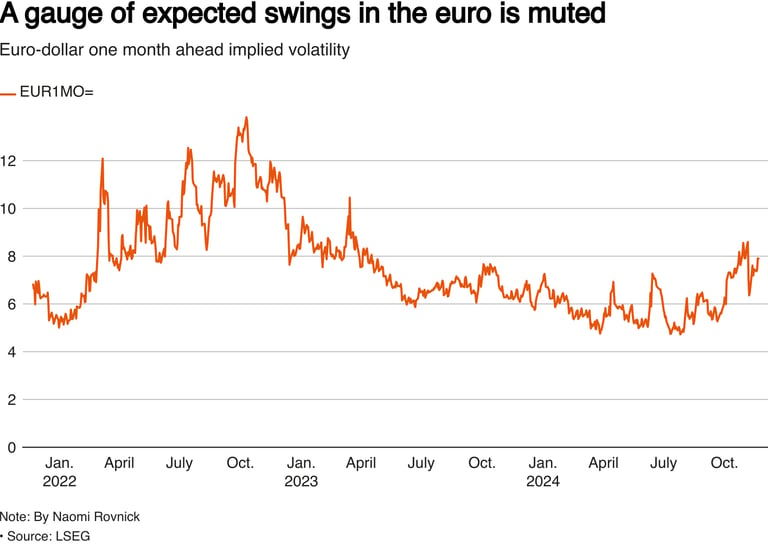The Volatility of the Euro
Aaroush Ramesh
7/1/20251 min read
The Euro is the shared currency of the European Union, and has faced its fair share of ups and downs in recent years, and is also a leading currency to trade with multiple pairs by speculators in the Forex market. Long term trends show a great appreciation of the Euro, but that has not always been its trajectory. In 2024, it hit a low of 1.05 against the $USD. According to sentimental analyses, this downward spiral was caused by Europe’s energy crisis. High costs of energy driving inflation kept the Euro weak, causing many investors and speculators to sell the currency, further depreciating its value.
U.S.A’s trade policies have also played a prominent role in the Euro’s value. Their tariffs imposed by the Trump Administration on import giants like China and Canada redirected trade flows through the European Union, which strengthened Europe’s economic stance. The Euro’s climb to 1.12 against the $USD by June of 2025 reflects its volatile, yet promising climb in its value. A factor that influenced its volatility is geopolitical tensions and policy changes.
Since the trade policies imposed by the U.S.A have appreciated the value of the Euro against the $USD, it offers opportunities for traders to invest in the currency pair. Traders can potentially see short term gains from investing in the pair during these times. However, volatility is still a threat. Especially during times of geopolitical tensions, the Euro’s value can potentially be bound to depreciate suddenly.
The euro’s journey from 1.05 in 2024 to 1.12 in June 2025 shows its resilience and its potential for traders. Pairs like EUR/USD offer real opportunities, but volatility calls for caution. By utilising technical analysis (watching levels like 1.1250) with news on ECB moves and U.S. trade policies, traders can ride the euro’s wave while dodging its risks.
Bibliography


Insights
Explore market trends and analysis for trading.
Connect
Learn
+91 8925461978
© 2025. All rights reserved.
